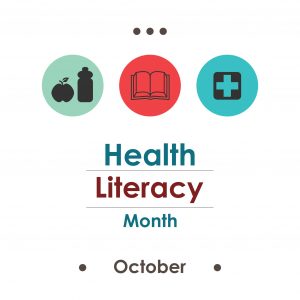
Not so long ago, the term literacy was simply the ability to read and write. Today literacy has a far broader meaning. As our lives become more digitally enabled, as healthcare becomes more digitally enabled, we need to talk about many forms of literacy; first and foremost, health literacy. Health literacy is a multifaceted topic that minimally includes but is not limited to clinical, cultural, emotional, and environmental literacy. There is also digital, financial, technology, and, increasingly important, cybersecurity literacy.
The CDC has defined two types of health literacy:
- “Personal health literacy is the degree to which individuals have the ability to find, understand, and use information and services to inform health-related decisions and actions for themselves and others.
- Organizational health literacy is the degree to which organizations equitably enable individuals to find, understand, and use information and services to inform health-related decisions and actions for themselves and others.”
I recommend that our focus should be broader than “personal health literacy.” I prefer to use the term “patient and family health literacy” and define it as the ability to
- understand and use healthcare-related communications between providers, payers, and the patients and families they serve in order to make the best decisions for the patients and their families,
- recognize and use the financial options available to patients and families,
- use analog and digital tools that enable patients and their families to navigate their health and care journey easily and safely,
- know that the sacred trust that exists between a patient and their provider is secure and protected.
The issue of health literacy appears in all forms of media. If you Google “health literacy” you’ll see more than 225 million results. Why so many? Because the evidence shows there is a high correlation between high literacy rates and successful outcomes – both clinical and financial. Organizations and individuals are awakening to the fact that we jointly and severally need to improve health literacy; hence, the number of Google results.
Literacy of all types requires the creation of an understandable vocabulary that can be used to describe the current and desired future state. Participants in health and care settings must be able to describe concepts in ways that are readily understood by the patients and their families. Patients and families need to understand all relevant aspects of their health and care journey, the risks and rewards of the alternatives that should be available and presented to them, the consequences of their action or inaction, the impact on the patient, their family, friends, and their work.
Even if you’re addressing these issues adeptly, the issues of cultural and emotional literacy remain. Culturally competent care requires that we understand the culture of the patient and family, and then craft a plan that balances the US health system’s approach with that of the patient and their family. The best chance for success requires that the individual or team delivering the care is emotionally literate, that they have the emotional intelligence to address the patient and family in a respectful and effective manner. Many courses of treatment include a change in lifestyle. Your cultural and emotional literacy can be the key to creating an actionable plan with a high chance of success.
Social determinants of Health (SDOH) are the environmental aspect to health literacy. Creating effective plans for patients and their families requires considering SDOH. Efforts to identify the relevant social determinants of health, analyze the data, formulate the right questions, and practically apply the lessons learned are underway.
Finally, we must address the technical and security elements of health literacy. In this digital world, not everyone has a computer or even a smartphone that supports apps. Levels of technical and security literacy are not highly correlated to age or economic status. Personalize the approach to addressing technical literacy to each patient and family situation. Make sure there are resources in place that will allow the patient and family to be active participants in their digital health journey.
Do you have to address all elements of health literacy simultaneously to be successful? Ideally, yes; practically, no. As you create a plan for dealing with one patient and one family, you should consider the various elements of literacy. As with any care plan, there are a host of inputs and options to consider. Make the plans practical and pragmatic – personalized for the patient and family and community in which they live. The best plans include effective, efficient communication, coordination, and collaboration. Make sure the patient’s plan is understandable, affordable, and sustainable. Check-in periodically and celebrate incremental successes. Adjust the plan as necessary. And remember what we know from teachers and mentors early in our lives. A genuine expression of interest from someone outside the family will pay dividends in the near and long term. Simply said, do what works.
This blog is the 9th in a series. The other eight are:
- Digital Health – Is Healthcare Ready? Are You and Your Organization Ready?
- Becoming a Digital Health System
- Digital Health – Governance in a Digital Health System
- Digital Health – The Role of Empathy and Understanding
- Digital Health – Language and Comprehension
- In a Digital World, The Human Elements are Essential
- Digital Health – Planning for the Virtual Campus
- Digital Health – A Practical Model for Change Management
